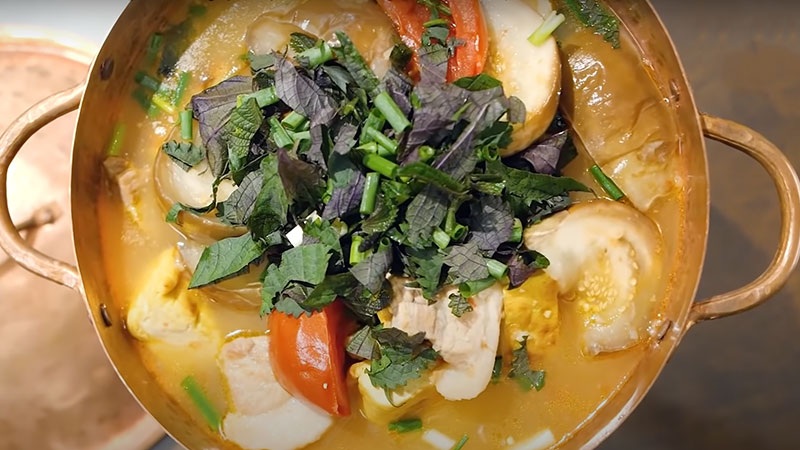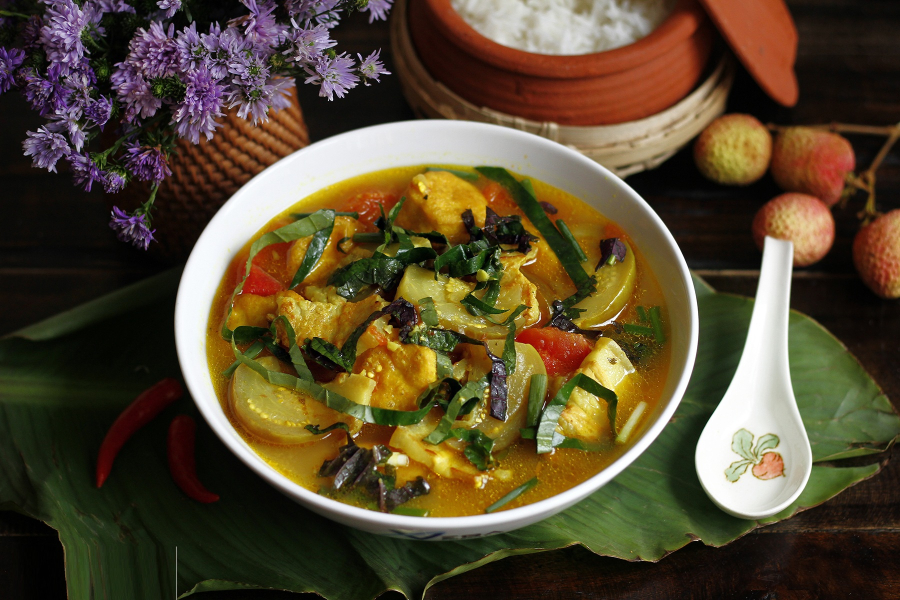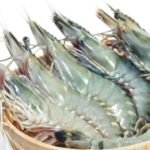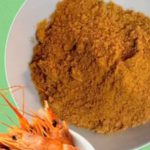Cà bung is a traditional dish native to Northern Vietnam, renowned for its robust flavors and unique preparation methods. The secret to its distinctive taste lies in the use of two key ingredients: fermented rice (*mẻ*) and shrimp paste (*mắm tôm*). In this article, we’ll explore why these ingredients are essential to the dish and how they elevate its flavors.
1. Fermented Rice: The Key to Its Signature Tang
Fermented rice is a unique condiment made by fermenting rice with water, resulting in a distinct aroma and subtle sourness. This process not only adds a tangy twist but also enhances the overall flavor profile of the dish.

Northern-style Cà Bung Ingredients
The Impact of Fermented Rice in Cà Bung:
- Flavor Enhancement: Fermented rice adds a gentle sourness to the dish, balancing the flavors and preventing it from becoming overly rich. Its tanginess also blends beautifully with the natural sweetness of the eggplant and meat, creating a well-rounded, appealing taste.
- Appetite Stimulation: The sourness from the fermented rice stimulates the palate, making Cà Bung more intriguing. Its tangy twist refreshes the dish, especially during the hot summer days, making it more palatable.
2. Shrimp Paste: The Umami Booster
Shrimp paste is an intense, fermented condiment made from shrimp and salt. While its aroma can be polarizing, it contributes a deep umami flavor to the dish.
The Impact of Shrimp Paste in Cà Bung:
- Umami Depth: Shrimp paste imparts a robust umami flavor to Cà Bung, adding depth and intensity. Its salty, savory notes enhance the taste of the meat and other ingredients, making the dish more savory and flavorful.
- Harmonious Blend: Shrimp paste blends seamlessly with the other spices and ingredients in Cà Bung, creating a unified, rich flavor profile. It accentuates the eggplant, meat, and spices, making the dish more enticing.

Cooking Cà Bung
3. The Magic of Combining Fermented Rice and Shrimp Paste
The subtle art of using both fermented rice and shrimp paste in Cà Bung creates a flavor symphony. This combination not only diversifies the taste but also strikes a delicate balance between sourness, saltiness, and umami.
Flavor and Structural Benefits: Together, fermented rice and shrimp paste enrich the flavor structure of Cà Bung. Fermented rice contributes mild sourness, while shrimp paste adds umami and saltiness. This duo ensures the dish is not only tasty but also perfectly balanced in terms of flavor.
4. Tips for Using Fermented Rice and Shrimp Paste in Cà Bung
Precision in Measurement: To achieve the ideal flavor profile, it’s crucial to use the right amounts of fermented rice and shrimp paste. Excess fermented rice can make the dish too sour, while too much shrimp paste may result in oversalting. Adjust the quantities to suit your taste preferences, ensuring a well-balanced dish.
Quality Matters: Opt for high-quality fermented rice and shrimp paste from reputable sources. Superior ingredients will contribute the best flavors and optimize the taste of your Cà Bung.

Cà Bung Dish
Conclusion
The use of fermented rice and shrimp paste in Cà Bung is not just a Northern Vietnamese culinary tradition but also a sophisticated way to enhance flavors and create a rich, captivating dish. The combination of these ingredients balances the flavor elements and delivers an exceptional culinary experience. If you haven’t tried Cà Bung with these unique spices, it’s time to embark on a flavorful journey and discover the magic of Northern Vietnam’s cuisine.



































